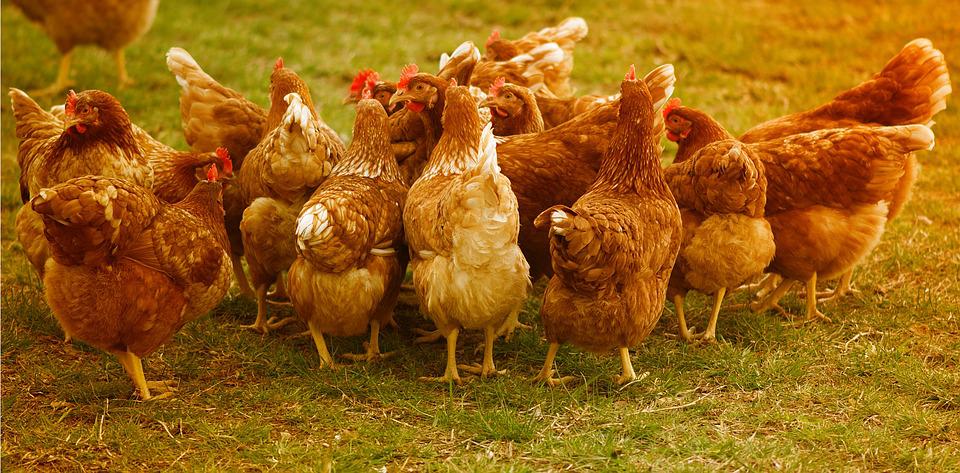No business can survive without proper record-keeping. The system need not be complicated, but as a poultry farmer you must note down important information, such as the feed consumption, the number of sick and dead birds removed, and the type and date of medicine or vaccines.
It is good practice for all processes in a broiler operation to have standard operating protocols, which should include information on procedures, monitoring systems, records, and an analysis of these records.

No matter how small your poultry business is, you have to keep good records. (Source: Pixabay)
Poultry
The analysis will determine the effects of changes in the management and environment of the poultry house, as well as the nutrition and health status of the birds.
Accurate production records, including status of hygiene and diseases, are essential for effective management, assessing risks, the control of the system and active response to developing problems.
Analysis and interpretation of production data, including live weight, the efficiency of feed conversion, and mortality are necessary for the upgrading and improvement of your chickens’ performance.

Good record-keeping will show you whether you are farming at a profit or a loss. (Source: Pixabay)
When and what to record
At the start of the cycle
At the beginning of the cycle, it is important to state information about the day-old chickens you have received, such as the date, the number of chickens, the breed, the particulars of the supplier, vaccines they have had, and the number of the cycle that is placed in the specific house.
Daily information
Daily information must be recorded, such as the minimum and maximum temperatures and humidity. Note down the type and quantity of feed that was given so that you can record how well the chickens have used the feed to grow. Note down the number of chickens that have become sick or have died. For a beginner farmer, a mortality rate of ten percent is acceptable. Also write down the date and type of vaccines and medicine you have given the birds in case there is an outbreak of disease, and you must check your records.

Record all important information about your chickens from the day they arrive, until the day you have cleaned out the henhouse in anticipation of the next batch. (Source: Pixabay)
At the end of the cycle
If you have kept records diligently, you can calculate your success (or failure!).
Average live mass: Divide the total mass of all the chickens by the number of chickens alive at the end of the cycle.
The total loss: The total number of mortalities, or the chickens that have died at the end of the cycle, must be calculated as a percentage of the original number of chickens that you placed in the house. This is done by means of the following formula: Total losses (%) = (Mortalities × 100) / Number placed.
Feed conversion ratio: At the end of the cycle, you can calculate how much feed the chickens ate during their lifetime. consumption to conversion. Use this formula: Feed conversion ratio = Total amount of feed used (kg) / Total live mass produced (kg).
A feed conversion ratio of 1,8 to 1,9 kg of feed used for each kilogram of meat produced is generally acceptable. If you used more feed than that, you fed the chickens too much, which reduced your profit margin.
This is an example of the records that must be kept from the moment the day-old chickens arrive to the day the poultry house has been cleaned out.


Take care of the pennies, and the pounds will take care of themselves. (Source: Pixabay)
References:
Arbor Acres broiler management guide. (2009) Aviagen https://eu.aviagen.com/assets/Tech_Center/AA_Broiler/AA-BroilerHandbook2018-EN.pdf
Cilliers, P.F. (July 2000) Small-scale poultry housing in South Africa. ARC-Institute for Agricultural Engineering.
Cilliers, F. (Project manager) (2001) Small-scale broiler house (combined). ARC-Institute for Agricultural Engineering.
Family poultry training course trainee’s manual. http://www.sapoultry.co.za/pdf-training/trainers-manual-poultry-course.pdf










Loved reading your article. it was really informational for me. wish to see more in the coming days.